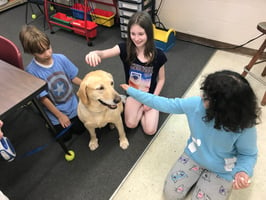Levy season is notorious for sneaking up on schools and government entities. As we stated in our...
5 Tips for Surviving Election Season (And How to Come Out on Top!)
Election season always seems to be right around the corner. Even if you have months to prepare, developing a successful communication strategy to garner the support of voters for school bond issues and levies should be a year-round activity.

In general, school districts tend to be more successful after cultivating an active, ongoing relationship with the local community. This relationship should focus on the positive things happening in the district, as well as the district’s plans moving forward. These plans may include the district’s facility needs and how the district will address these needs.
With this understanding, the district can then propose the estimated costs and possible solutions to pay for the costs in a responsible manner that the community supports and understands.
When election season rolls around, school districts that have an established relationship with their community will be more likely to pass bond issues and levies. Engaging the community will be much easier if an active relationship has already been cultivated.
Furthermore, there are certain steps every school district can follow to prepare for—and ultimately survive—election season. By following these five tips, your district can come out on top:
#1 The Importance of Consistent Messaging
Consistent, clear messaging is the cornerstone of any successful public outreach strategy. This means creating a series of consistent messages (three-second message, 30-second message and a three-minute message) to appeal to voters across different platforms. When creating the different messages that will be used, constancy is critical—particularly when there are a variety of audiences that must be reached. The best way to ensure your district continually delivers a message pertaining to the same end-goal is to have a cohesive communication strategy. Implementing a messaging strategy that can be used to quickly engage and capture the attention of targeted audiences will help voters see the real need for the bond issue or levy.
#2 Community Engagement is Key
Another element to hone in on as you develop your communication strategy is how you will engage with the community. In order to best inform your target voters, all of the parties involved in the campaign must be aware of their separate but symbiotic roles. The district’s superintendent and school board will oftentimes play significant roles in driving the issue or levy forward. Having these figureheads from the district enlighten the committee to the issue or levy’s advantages will be an essential facet of engaging the community. This way, all of the key stakeholders will be united and can work together to discuss the issue or levy’s relevance with potential voters. With an effective communication strategy in place, the community can be engaged in every stage of the election process, aligning with the district’s desired outcome.
#3 Working with a PAC
Members in the community will oftentimes form a political action committee (PAC) or committees as a way of advocating and supporting an issue. These committees can appoint a treasurer, open a bank account, make expenditures and collect contributions. Therefore, PACs can be instrumental in communicating the details of your bond issue or levy. Uniting with a PAC or simply having a PAC on your side will be a great way to advocate to more members of the community, making sure that your message is heard. However, school districts must take care to enforce clear and neutral policies that regulate all campaign activity, avoiding direct involvement with committees who are in support of one particular cause.
#4 Creating a Plan
Behind every success is a well-developed plan. This is true when leading a public outreach effort during election season, especially when there is a variety of people working toward one overarching goal. Since board members, administrators and local representatives may be involved in supporting bond issues and school levies, it is essential that all parties are a united front. Outlining a detailed, concise plan that clarifies the strategy for each individual stage of the election process will benefit the overall communication. Make sure the plan is disseminated to every person who is playing a role in the communication effort. This will also be useful in keeping the entire approach on track.
#5 Following Through with Your Commitments
Once you have successfully communicated the needed information to voters, you aren’t quite finished yet. Part of the outreach effort will be making commitments to your district’s community members that certain changes or updates will occur. If and when the bond issue or levy passes, you must follow through with these commitments. Otherwise, the community will start asking questions and may not be as readily supportive of the district’s decisions in the future. As mentioned, consistency and transparency are absolutely key—and this open, clear communication must continue even after the election takes place.
By following these guidelines, your school district can navigate election season and the development of a consistent public outreach strategy in a manner that allows you to come out on top.
The Impact Group has proven success with assisting school districts in creating communication strategies during election season. We want to help your district. Contact us today to schedule your FREE levy marketing consultation.
Want to learn more?
Click here to download our case study on a recent Levy Campaign.







